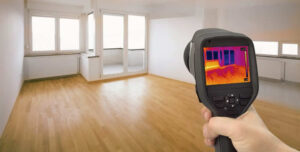Just how to Locate as well as Repair Work Water Leaks-- A Comprehensive Guide
Just how to Locate as well as Repair Work Water Leaks-- A Comprehensive Guide
Blog Article
The writer is making several great annotation regarding Finding hidden leaks overall in this article directly below.

Early detection of leaking water lines can reduce a possible catastrophe. Aside from conserving you money, it will decrease the irritation and stress. The moment you locate a leakage, calling your plumber for repair work is the best remedy. Nonetheless, some small water leaks may not show up. If you can not detect it with your nude eyes, below are some hacks that assist.
1. Analyze the Water Meter
Every house has a water meter. Checking it is a surefire manner in which aids you find leakages. For starters, shut off all the water sources. Make sure no one will certainly purge, make use of the faucet, shower, run the cleaning maker or dishwasher. From there, go to the meter and also watch if it will certainly change. Given that no person is using it, there must be no movements. If it relocates, that shows a fast-moving leak. Also, if you spot no changes, wait a hr or 2 and inspect back once more. This suggests you may have a slow-moving leakage that could even be underground.
2. Examine Water Consumption
If you spot abrupt adjustments, in spite of your usage being the same, it means that you have leakages in your plumbing system. An unexpected spike in your costs shows a fast-moving leakage.
A steady rise every month, even with the same behaviors, shows you have a slow leakage that's likewise gradually intensifying. Call a plumber to thoroughly examine your property, specifically if you feel a warm location on your flooring with piping underneath.
3. Do a Food Coloring Test
30% comes from bathrooms when it comes to water intake. Test to see if they are running correctly. Drop specks of food color in the tank and also wait 10 minutes. There's a leak in between the container and dish if the color in some way infiltrates your bowl throughout that time without flushing.
4. Asses Exterior Lines
Do not forget to examine your outside water lines too. Examination spigots by affixing a garden hose pipe. Needs to water seep out of the link, you have a loosened rubber gasket. Replace this as well as make certain all connections are tight. It will aid get it professionally took a look at and maintained every year if you've obtained a sprinkler system. One small leakage can waste tons of water as well as increase your water costs.
5. Evaluate and also Assess the Scenario
Home owners need to make it a habit to examine under the sink counters and also also inside closets for any type of bad odor or mold and mildew growth. These two red flags indicate a leak so timely interest is needed. Doing routine evaluations, even bi-annually, can save you from a significant trouble.
Extra notably, if you understand your house is already old, maintain a watchful eye on your heating systems, hose pipes, pipes and so on. Check for stainings and also deteriorating as many devices as well as pipes have a life span. They will certainly also normally degrade because of wear and tear. Do not wait for it to intensify if you suspect dripping water lines in your plumbing system. Call an expert plumber immediately so you do not end up with a dreadful mess in your home.
Early discovery of leaking water lines can alleviate a potential disaster. Some small water leakages may not be noticeable. Checking it is a guaranteed means that aids you uncover leaks. One small leakage can throw away bunches of water as well as spike your water costs.
If you presume leaking water lines in your plumbing system, don't wait for it to intensify.
WARNING SIGNS OF WATER LEAKAGE BEHIND THE WALL
PERSISTENT MUSTY ODORS
As water slowly drips from a leaky pipe inside the wall, flooring and sheetrock stay damp and develop an odor similar to wet cardboard. It generates a musty smell that can help you find hidden leaks.
MOLD IN UNUSUAL AREAS
Mold usually grows in wet areas like kitchens, baths and laundry rooms. If you spot the stuff on walls or baseboards in other rooms of the house, it’s a good indicator of undetected water leaks.
STAINS THAT GROW
When mold thrives around a leaky pipe, it sometimes takes hold on the inside surface of the affected wall. A growing stain on otherwise clean sheetrock is often your sign of a hidden plumbing problem.
PEELING OR BUBBLING WALLPAPER / PAINT
This clue is easy to miss in rooms that don’t get much use. When you see wallpaper separating along seams or paint bubbling or flaking off the wall, blame sheetrock that stays wet because of an undetected leak.
BUCKLED CEILINGS AND STAINED FLOORS
If ceilings or floors in bathrooms, kitchens or laundry areas develop structural problems, don’t rule out constant damp inside the walls. Wet sheetrock can affect adjacent framing, flooring and ceilings.
https://www.servicemasterbyzaba.com/blog/how-to-detect-water-leakage-in-walls/

Hopefully you enjoyed reading our excerpt about Leaking water lines. Thank you for taking a few minutes to browse our article post. Those who enjoyed reading our page kindly be sure to share it. Thanks a lot for your time. Come back soon.
Report this page